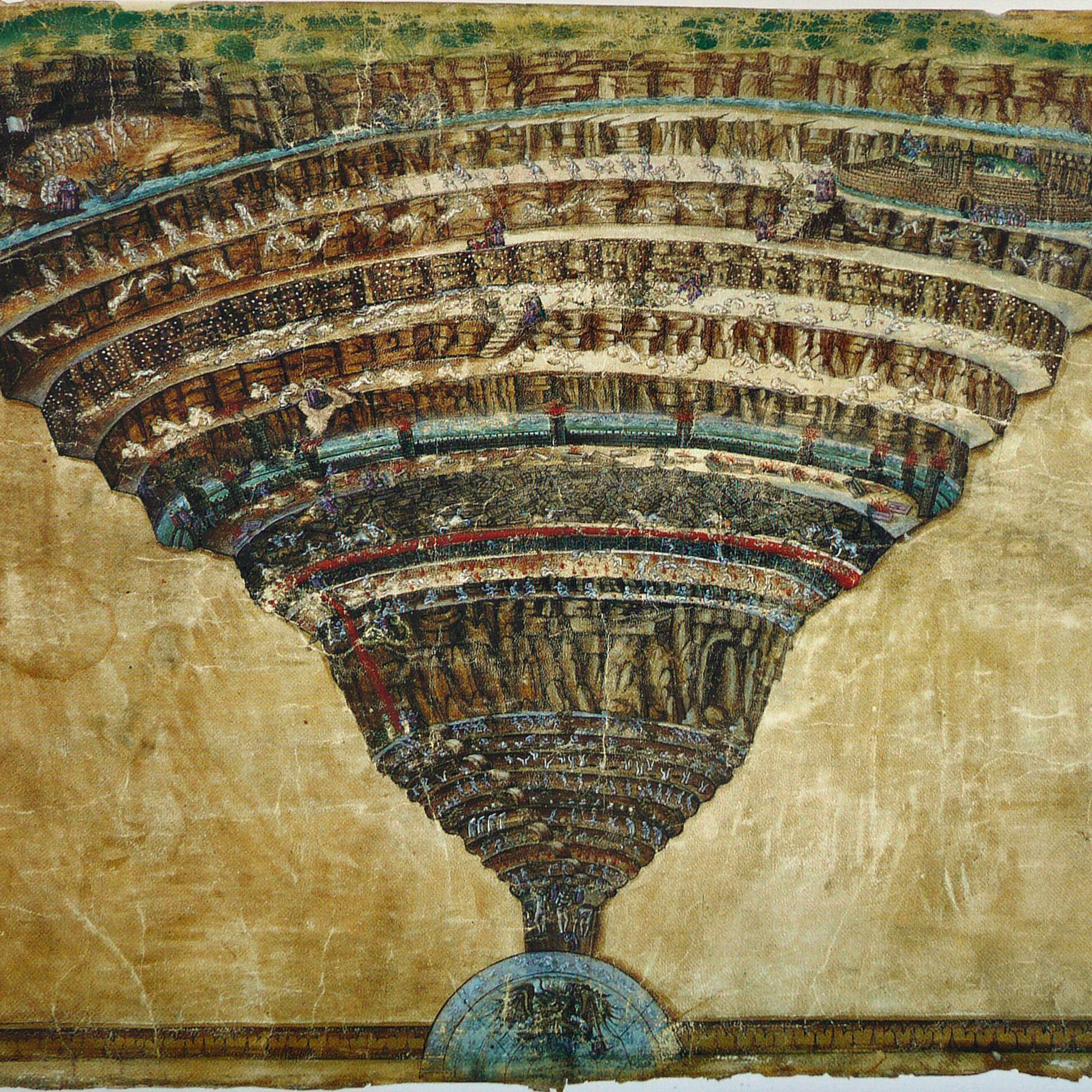FEATURED: Ninth-Circlers: A Modern Sonnet
by Zachary Bartles
The Map of Hell (in Italian La Mappa dell’Inferno) by Botticelli
NINTH-CIRCLERS
The emperor of the woeful kingdom
rose from the ice below his breast
—Dante, Inferno, XXXIV, 28-9
Totter nakedly up a cochleate
grade. Dripping with icemelt, chilblained, one is
shouting above the others’ chatter: “Hell’s
bedfrost is thawing! Satan’s coarse-furred hind-
limbs freed, on cloven hooves he’ll reenter
the world and, leading God’s likeness away
from God, prompt a second, thorougher fall.
Hoofprints’ll breve and breve and breve the clay.
Man will follow them this way and that way,
like poetry. They, man, will cut the trail
of he who went on ahead, but the prints,
shallowing till they are flush with the dust,
will have lead—well, will have lead us to this
outwarding ascent, lost in a dark wood.”
A RENAISSANCE CONTEXT:
England entered its Renaissance around the rise of the Tudor Dynasty, when, in 1486, Henry the VII married Elizabeth of York, uniting Houses Lancaster and York. From then until the late 17th century, England, like Italy’s earlier Renaissance, saw a rebirth of the arts—particularly of letters—and then more particularly, the English sonnet (the Shakespearean and less popular Spenserian), which became the most popular form during the period, as an updated form of the Italian (Petrarchan) sonnet. In my poem, I attempted to describe an imagined scene from perhaps the greatest Medieval text, The Inferno, like the poets from the Renaissance did—with fourteen lines, ten syllables at a time, and a modern take on rhyme scheme.
ZACHARY BARTLES
Zachary Bartles was raised in the Shenandoah Valley of West Virginia. His work appears or is forthcoming in Appalachian and Northwest Reviews, Ekstasis Magazine, Relief: A Journal of Art and Faith, The Way Back to Ourselves, and Ribbons by the Tanka Society of America, among others. He has been nominated for a Pushcart Prize, and his work has been featured in the popular Substack, Dispatches from the Basement. He Lives in East Texas with his wife, where he is a stay-at-home father to their daughter.


